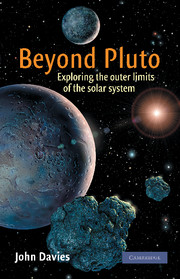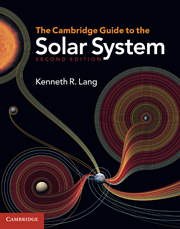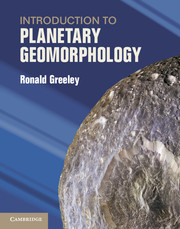Beyond Pluto
In the ten years preceding publication, the known solar system more than doubled in size. For the first time in almost two centuries an entirely new population of planetary objects was found. This 'Kuiper Belt' of minor planets beyond Neptune revolutionised our understanding of the solar system's formation and finally explained the origin of the enigmatic outer planet Pluto. This is the fascinating story of how theoretical physicists decided that there must be a population of unknown bodies beyond Neptune and how a small band of astronomers set out to find them. What they discovered was a family of ancient planetesimals whose orbits and physical properties were far more complicated than anyone expected. We follow the story of this discovery, and see how astronomers, theoretical physicists and one incredibly dedicated amateur observer came together to explore the frozen boundary of the solar system.
- Written by a scientist active in the field, in close collaboration with others involved
- A modern story of scientific discovery, showing how theory and practice interact
- Clearly explains the interest and importance of these solar system members
Reviews & endorsements
Review of the hardback: '… a pleasing book with an elegant style …'. Astronomy & Geophysics
Review of the hardback: 'Beyond Pluto is a candid, detailed and well illustrated book that takes the general reader on an intriguing journey to the far frontiers of astronomical research.' David Hughes, New Scientist
Review of the hardback: '… a must for comet enthusiasts and armchair astronomers wishing to gain a sense of what the outermost provinces of the Sun's dominion may be like.' Neil English, Astronomy Now
Review of the hardback: '… there is something here for everyone. For the non-professional, Davies discusses the tools and art of astronomical research in a practical manner … For the expert and research astronomer, this account provides context for the ongoing work in the field as well as an excellent overview of the driving questions and current state of knowledge … it is a pleasure to have a book that is readable at so many levels and able to describe the concepts and relevance of such a new field of research.' Joel Wm. Parker, Nature
Review of the hardback: '… an overview of a rapidly developing research that is accessible to the non-specialist and as such is particularly welcome. Anyone interested in solar system studies and the formation and evolution of the planets will want to buy this book.' Richard Taylor, Spaceflight
Review of the hardback: 'A modern story of scientific discovery, showing how theory and practice interact.' Europe & Astronomy
Review of the hardback: 'The book gives an accessible account of the historical context of research into objects beyond Pluto. … what brings the book to life is the fascinating insight Davies gives into the nomadic existence of young professional astronomers, the excitement of observations which confirm orbital predictions, the frustration of having not quite enough clout to get crucial telescope time, and the ingenious ways of making the most of what resources they do get. … Anyone wanting an insider's account of this continuing voyage of discovery should read Davies' book. Thoroughly recommended.' Newsletter of the Federation of Astronomical Societies
Review of the hardback: '… an immensely enjoyable read.' Simon Green, The Observatory
Product details
November 2011Paperback
9781107402614
242 pages
229 × 152 × 13 mm
0.33kg
Available
Table of Contents
- Prologue
- 1. Towards the edge of the solar system
- 2. The centaurs
- 3. The mystery of the short period comets
- 4. Shooting in the dark
- 5. Deeper and deeper
- 6. Sorting out the dynamics
- 7. What are little planets made of?
- 8. Numbers and sizes
- 9. Things that go bump in the dark
- 10. Dust and disks
- 11. Where do we go from here?
- 12. Will we ever get our names right?
- Appendix
- Index.





